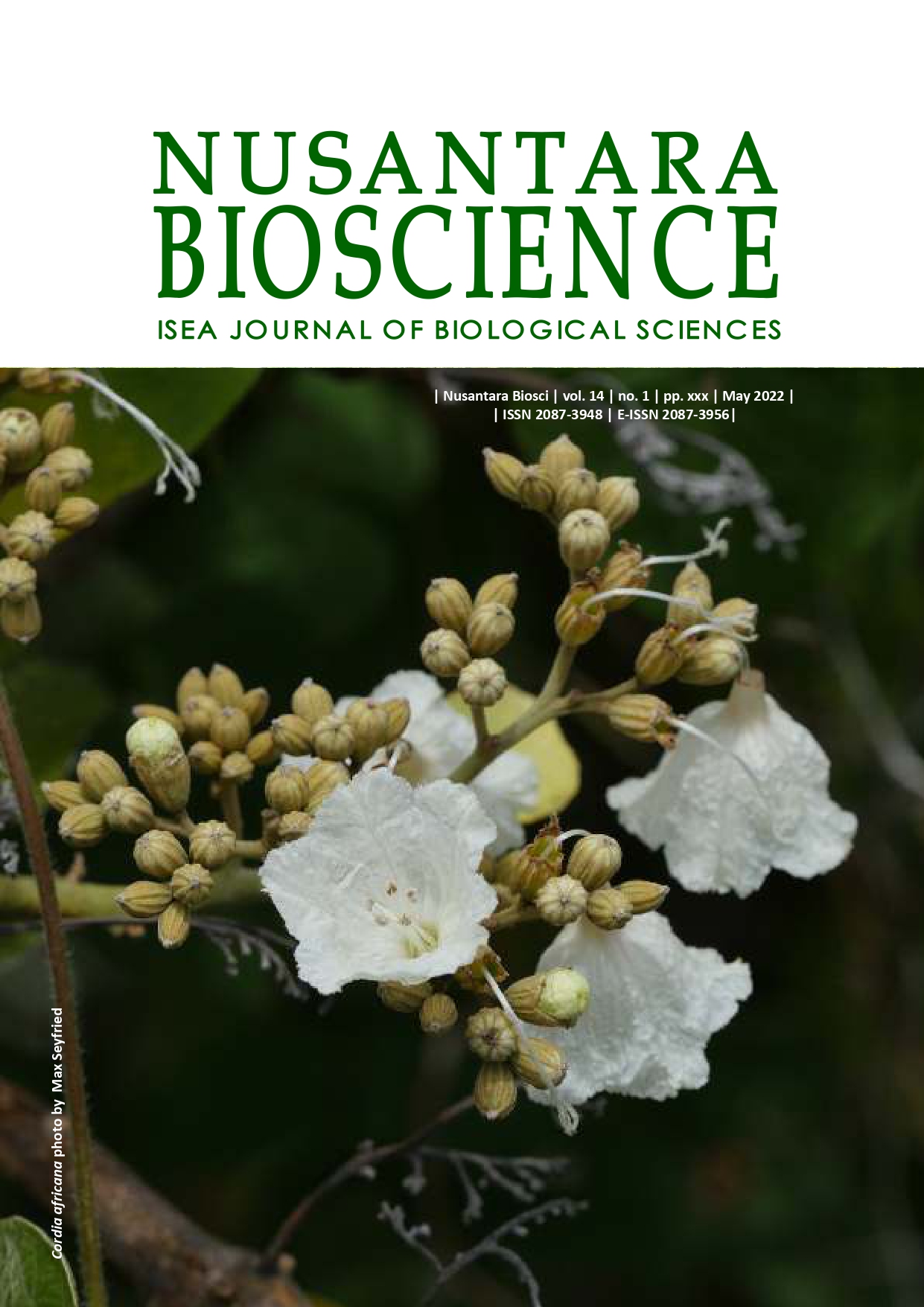Yield performances of rice varieties (Oryza sativa) under nano-CuO and nano-ZnO micronutrient fertilizers
##plugins.themes.bootstrap3.article.main##
Abstract
Abstract. Sandanayake CLT, Weerakoon SR, Karthikeyan N, Somaratne S. 2022. Yield performances of rice varieties (Oryza sativa) under nano-CuO and nano-ZnO micronutrient fertilizers. Nusantara Bioscience 14: 95-103. Rice (Oryza sativa L.) is a primary staple food in the world. There is an extreme need for higher rice yields to meet the ever-increasing demand with the rise in population despite the hampering impact of climatic changes. Nanotechnology plays a potential role in food security and introduces nano fertilizers as an alternative to conventional fertilizers. Therefore, the present research was carried out to determine the effects of nano micronutrient fertilizers, nano-CuO, and nano-ZnO on the yield of selected rice varieties, Bg360, BW364, Kaluheenati, and Kuruluthuda. Sol-gel and thermal decomposition methods synthesized nano-fertilizers used in the study. Nano-ZnO, nano-CuO, and nano-CuO-ZnO composite treatments were applied as a foliar spray at concentrations of 30 mg L-1 (T1), 60 mg L-1 (T2), and 120 mg L-1 (T3) and double deionized water served as the control (T0). The synthesized nano-fertilizers were applied during the growth stage [at 48-58 days after sowing (DAS)] and grain filling stage [100-105 DAS], while the plants were provided with appropriate levels of N, P, and K fertilizers, as recommended by Department of Agriculture. A Complete Randomized Block Design was employed with three blocks and five replicates in each block. The Yield parameters were recorded at the harvesting stage. Descriptive statistics such as mean and standard error of mean and inferential statistics were performed on the data obtained. ANOVA with interaction terms was performed to assess the significant differences between the treatments. The descriptive analyses show an increase in the yield of the rice varieties under the application of nano-fertilizers. ANOVA suggests a significant effect (p ? 0.05) of nano-CuO and nano-ZnO on the yield of rice varieties used in the study. Both traditional and inbred rice varieties indicated yield response to applied nano-fertilizers.
2019-01-01

